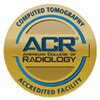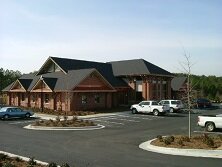Computed Tomography (CT)
Computed tomography takes X-ray technology one step further. Instead of just a single, flat 2-dimensional view of the body as in a  conventional X-ray, CT scans take multiple, very detailed “slices” or cross-sections of the body, both horizontally and vertically.
conventional X-ray, CT scans take multiple, very detailed “slices” or cross-sections of the body, both horizontally and vertically.
CT scans offer more information about your organs, muscles, fat, and bones while minimizing your exposure to radiation. This is why CT scans are commonly used for diagnosis in order to advance treatment and manage patient care.
Our Technology | High Standards | Patient Comfort | Preparing for Your Procedure
Our Technology
Physicians in every service line rely on CT scans to give them the right information so they can provide better care. At GRHealth, our physicians can do this using the latest CT technology.
Our scans are:
- Faster. Our two 256-slice diagnostic scanners are the fastest technology currently available, so that most scans take mere seconds.
- Safer—with low radiation. Our advanced technology—including iterative reconstruction and metal artifact reduction—self-regulates to ensure patients receive the lowest dose of radiation possible while still allowing us to obtain a high-quality image. This is particularly important when children must undergo CT scanning.
- Diagnostic AND procedural. Along with our diagnostic scanners, we also have a dedicated 128-slice procedural scanner that combines CT and fluoroscopy technology to provide physicians with real-time information during procedures, including CT-guided lung and liver biopsies, tube or drain placements, radiofrequency ablation, spine injections for pain management, and more. ^
High Standards of Care
At GRHealth, CT plays a key role in disease management. Thanks to the expertise of our CT team, we are able to meet and beat national standards of care:
- Stroke care. We meet the requirements of the American Heart Association for CT imaging and reports within 30 minutes of patient arrival — ensuring that patients can receive clot-busting drugs within a three-hour window.
- Trauma care. Our 24/7 CT team ensures that patients arriving at our Level-1 trauma center receive a CT scan as soon as our trauma medicine physicians need it.
- Cancer care. We work closely with the GRU Cancer Center to diagnose and follow cancer patients.^
Comfort for Big and Little Patients
As technology improves, so does patient comfort. Because GRHealth has the latest CT technology available, we are able to complete scans in seconds. This is particularly helpful in certain scans where you must hold your breath, if you are claustrophobic, or during cardiac scans.
Our adult CT scan room is also painted with a restful forest theme to create a pleasant atmosphere. For our younger patients, we offer a “kitten scanner”: Children may choose a stuffed animal to have a “CT scan” while we explain what happens during the scan, helping to calm any fears or anxiety. ^
Preparing for Your Procedure
Before your exam:
Make sure you tell your physician if you are allergic to X-ray dye, if you are pregnant or if you are claustrophobic and think you will be unable to lie still while inside the CT scanner.
You will be given instructions regarding possible eating restrictions prior to your appointment.
During your exam:
- When you arrive for your appointment, you will be asked to remove any clothing, jewelry, or other objects that may interfere with the scan.
- You will lie down on a table that slides into the large, donut-shaped opening of the scanning machine.
- Your radiographer will be in another room where the scanner controls are located. However, your radiographer will watch you at all times and will be in constant communication with you in case you have any questions or concerns. Speakers inside the scanner allow your technologist to communicate with and hear you.
- At certain moments during the scan, you may be asked to hold your breath for a few seconds and lie completely still.
- As the scanner begins to rotate around you, low-dosage X-rays pass through your body for short amounts of time. The X-rays absorbed by the body's tissues are detected by the scanner and transmitted to the computer, which then transforms the information into an image to be interpreted by the radiologist.
- You may be asked to wait for a short period of time while the radiologist examines the scans to make sure they are clear. If the scans are not clear enough to obtain adequate information, you may need to have additional scans performed. ^





